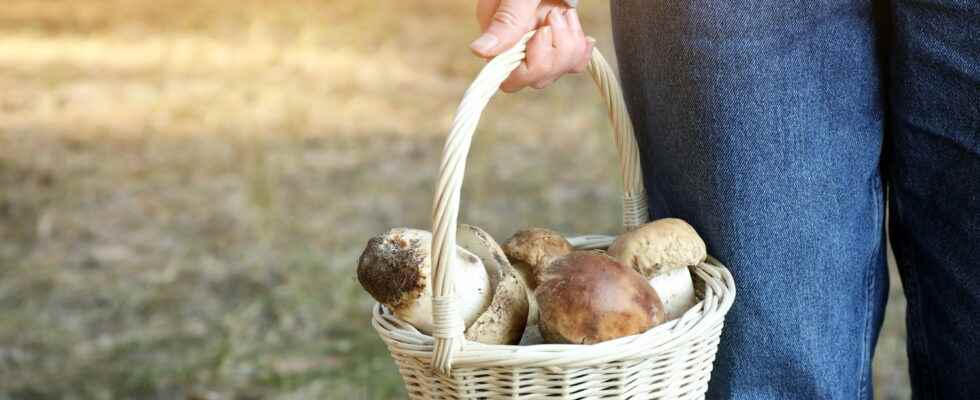October is the ideal time to pick mushrooms but be careful not to make a mistake and make yourself sick! Warning symptoms, precautions and what to do to avoid food poisoning.
Go pick up mushrooms in the forest, what a pleasure! But be careful not to spoil it by using the wrong species! “Whether you are a connoisseur or an occasional picker, stay vigilant and follow good practices for safe consumption. recalled the National Agency for the Safety of Medicines (handles) in 2021. In 2020, more than 1,300 poisonings were reported to poison control centres, particularly in October (56% of cases).
How not to make mistakes when picking mushrooms?
During picking:
- Only collect mushrooms that you know perfectly well: some highly toxic poisonous mushrooms are very similar to edible species.
- Pick only specimens in good condition and take the entire mushroom (stem and cap) to allow identification.
- Do not pick mushrooms near potentially polluted sites (roadsides, industrial areas, landfills).
- Separate the harvested mushrooms by species to avoid mixing pieces of poisonous mushrooms with edible mushrooms.
- Place the mushrooms separatelyin a crate or cardboard box, but never in a plastic bag which accelerates rotting.
- Do not consume mushrooms identified solely by means of a mushroom recognition application on a smartphone, due to the high risk of error.
Never feed wild mushrooms to young children.
After picking:
- If in doubt about the condition or identification of one of the mushrooms harvested, do not eat the harvest before having it checked by a specialist. Pharmacists or mycology associations and societies in your area can be consulted.
- Wash hands thoroughly after harvest.
Storage and consumption of mushrooms:
- Store the mushrooms in the refrigerator (maximum 4°C) avoiding contact with other foods and consuming them within two days of picking.
- Consume mushrooms in reasonable quantities after a sufficient cooking time (20 to 30 minutes in a frying pan or 15 minutes in boiling water) and never eat raw wild mushrooms.
- Never offer picked mushrooms to young children. Make sure they don’t put a fungus in the garden or schoolyard in their mouth.
Symptoms usually begin to appear within 12 hours after consumption.
What symptoms in case of poisoning?
The signs in case of poisoning can be more or less serious depending on the type of mushroom consumed and the quantity ingested. These are often digestive disorders (diarrhea, vomiting, nausea), sometimes tremors, dizziness, visual disturbances, liver damage in some cases can be fatal. “Symptoms usually begin to appear within 12 hours after consumption and the intoxicated person’s condition can worsen rapidly“, indicates ANSES on its website.
What to do in case of poisoning?
If you notice the appearance of one or more of these symptoms following the consumption of mushrooms collected in the wild, immediately call 15 or 112 or the poison control center closest to you. It is very important to mention to your interlocutor that you have eaten mushrooms, specify the time of the last meal, the time of onset of the first signs as well as a precise description of the symptoms.
Two reflexes: Photograph your picking before cooking! The photo will be useful to the toxicologist at the poison control center in the event of poisoning, to guide you towards the most suitable treatment. And keep leftovers to allow better identification of the species.
| Poison Center numbers | |
|---|---|
| ANGERS : 02 41 48 21 21 | MARSEILLES : 04 91 75 25 25 |
| BORDEAUX : 05 56 96 40 80 | NANCY : 03 83 22 50 50 |
| LILLE : 08 00 59 59 59 | PARIS : 01 40 05 48 48 |
| LYONS : 04 72 11 69 11 | TOULOUSE : 05 61 77 74 47 |
Sources:
Mushroom season ahead this year: be vigilant against the risk of poisoning, ANSES, August 31, 2021.
“An increase in poisoning linked to the consumption of mushrooms: stay vigilant!” ANSES, October 23, 2019
